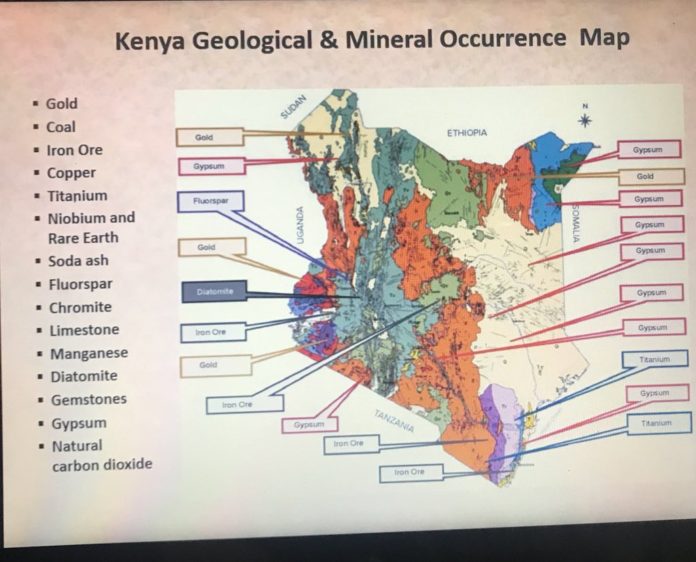A survey to map Kenya’s mineral deposits is ongoing with phase one of the project expected to conclude in about a month’s time. Speaking at a virtual session looking at the country’s mining industry, Principal Secretary Ministry of Petroleum and Mining Andrew Kamau said the survey seeks to determine the number of underground minerals.
He added that the Kenyan mining sector is at a nascent stage and the ministry is working on a law that will help define the sector and relationship between different players including the government, artisanal miners, mining companies and investors.
“It’s a journey that takes longer but we want to work with investors to find a solution that works for everyone,’’ Kamau said.
He added that being a mining house comes with its own challenges and as government, we have to think about a number of things, including sustainability in order to future-proof the sector and get the best of it.
”An aerial mapping to determine the country’s mineral wealth was 50% complete, with the exercise expected to be wound by June this year,’’ He said.
He said only 4% of the country is mapped, yet data from the aerial survey was crucial in encouraging investments into the sector.
The Mineral Rights Board (MRB) chairman Stephen Kuria said that the country’s mineral sector has the potential to lift the economy significantly if well harnessed.
Kuria said that the ongoing Covid-19, which has disrupted nearly all sectors of the economy hasn’t impacted the sector negatively and prices of minerals like gold and copper have hit an eight-year high.
Kuria said that mining, which has the potential to contribute up to 11% of Kenya’s GDP currently contributes only 1% with the sector predominantly run by two corporates—Magadi Soda and Base Titanium. The sector contributes Sh67billion to the country’s GDP.
In October 2016, British and Canadian consultancy firms International GeoScience Services and Paterson, Grant and Watson won a consultancy contract to oversee the 30 months-long survey.
The firms were to provide consultancy services for the development of specifications, terms of reference and supervision of the survey.
Even so, the National Treasury recalled funds that had been allocated for the survey in the supplementary budget as part of plans to scale down expenditure by $1.7 billion Sh170 billion.
In 2013, Kenya had given China’s Geological Exploration Technology Institute (GETI) exclusive rights to do the geophysical survey with funding from Beijing, a move that attracted opposition from the Kenya Chamber of Mines, which said the deal amounted to ceding control of the country’s resources.
The mistrust of China’s prominent role in the survey has instigated a bitter falling out, prompting the Exim Bank of China to withdraw $65 million in funding, a move that eventually saw Kenya withdraw a contract given to GETI.
Successive governments have had little success in trying to develop Kenya’s mining potential, with foreign exploration companies discouraged by poor infrastructure and an outdated legal framework.
In 2016, a new law came into effect, which includes giving the government a 10 per cent share, known as free carry interest, for projects that meet yet-to-be determined minimum investment thresholds.
It also sets the average rate of royalties for the government for various minerals at six percent, with miners paying a lower rate when they process the minerals locally.
Kenya has proven deposits of titanium, gold and coal and is also understood to hold significant deposits of copper, niobium, manganese and rare earth minerals.
President Uhuru Kenyatta created the Mining Ministry in 2013 to try and diversify the east African economy that relies mainly on tourism and agriculture.



